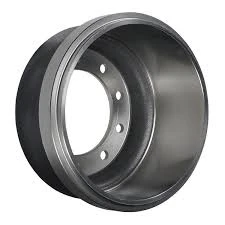
-
 Afrikaans
Afrikaans -
 Albanian
Albanian -
 Amharic
Amharic -
 Arabic
Arabic -
 Armenian
Armenian -
 Azerbaijani
Azerbaijani -
 Basque
Basque -
 Belarusian
Belarusian -
 Bengali
Bengali -
 Bosnian
Bosnian -
 Bulgarian
Bulgarian -
 Catalan
Catalan -
 Cebuano
Cebuano -
 Corsican
Corsican -
 Croatian
Croatian -
 Czech
Czech -
 Danish
Danish -
 Dutch
Dutch -
 English
English -
 Esperanto
Esperanto -
 Estonian
Estonian -
 Finnish
Finnish -
 French
French -
 Frisian
Frisian -
 Galician
Galician -
 Georgian
Georgian -
 German
German -
 Greek
Greek -
 Gujarati
Gujarati -
 Haitian Creole
Haitian Creole -
 hausa
hausa -
 hawaiian
hawaiian -
 Hebrew
Hebrew -
 Hindi
Hindi -
 Miao
Miao -
 Hungarian
Hungarian -
 Icelandic
Icelandic -
 igbo
igbo -
 Indonesian
Indonesian -
 irish
irish -
 Italian
Italian -
 Japanese
Japanese -
 Javanese
Javanese -
 Kannada
Kannada -
 kazakh
kazakh -
 Khmer
Khmer -
 Rwandese
Rwandese -
 Korean
Korean -
 Kurdish
Kurdish -
 Kyrgyz
Kyrgyz -
 Lao
Lao -
 Latin
Latin -
 Latvian
Latvian -
 Lithuanian
Lithuanian -
 Luxembourgish
Luxembourgish -
 Macedonian
Macedonian -
 Malgashi
Malgashi -
 Malay
Malay -
 Malayalam
Malayalam -
 Maltese
Maltese -
 Maori
Maori -
 Marathi
Marathi -
 Mongolian
Mongolian -
 Myanmar
Myanmar -
 Nepali
Nepali -
 Norwegian
Norwegian -
 Norwegian
Norwegian -
 Occitan
Occitan -
 Pashto
Pashto -
 Persian
Persian -
 Polish
Polish -
 Portuguese
Portuguese -
 Punjabi
Punjabi -
 Romanian
Romanian -
 Russian
Russian -
 Samoan
Samoan -
 Scottish Gaelic
Scottish Gaelic -
 Serbian
Serbian -
 Sesotho
Sesotho -
 Shona
Shona -
 Sindhi
Sindhi -
 Sinhala
Sinhala -
 Slovak
Slovak -
 Slovenian
Slovenian -
 Somali
Somali -
 Spanish
Spanish -
 Sundanese
Sundanese -
 Swahili
Swahili -
 Swedish
Swedish -
 Tagalog
Tagalog -
 Tajik
Tajik -
 Tamil
Tamil -
 Tatar
Tatar -
 Telugu
Telugu -
 Thai
Thai -
 Turkish
Turkish -
 Turkmen
Turkmen -
 Ukrainian
Ukrainian -
 Urdu
Urdu -
 Uighur
Uighur -
 Uzbek
Uzbek -
 Vietnamese
Vietnamese -
 Welsh
Welsh -
 Bantu
Bantu -
 Yiddish
Yiddish -
 Yoruba
Yoruba -
 Zulu
Zulu
Signs Your Drum Brakes Might Need Replacement or Repair
How to Tell if Drum Brakes Are Bad
Drum brakes are a common type of braking system used in many vehicles, particularly older models and the rear brakes of some modern cars. While drum brakes are typically reliable, they can wear out over time. It's essential for drivers to recognize the signs of failing drum brakes to ensure their safety on the road. This article will guide you through some common symptoms that indicate your drum brakes may need attention.
Unusual Noises
One of the first warning signs of bad drum brakes is unusual noises. If you hear a grinding, squeaking, or squealing sound when you apply the brakes, it could indicate that the brake shoes have worn down and are no longer making proper contact with the drum. In some cases, the sounds may be caused by debris caught between the shoes and the drum. It’s crucial to address any noise as soon as it arises, as ignoring it can lead to more severe damage and expensive repairs.
Reduced Braking Performance
If you notice a decrease in braking performance, such as longer stopping distances or a spongy brake pedal feel, it may be time to inspect your drum brakes. Damaged or worn brake shoes can significantly impair the braking ability of your vehicle. When brake shoes wear unevenly or become contaminated with oil or grease, they can fail to grip the drum properly, leading to a dangerous reduction in stopping power.
Pedal Vibration
Another indicator of bad drum brakes is a vibrating or pulsating brake pedal when applying pressure. This sensation can be a sign that the brake drum is warped or unevenly worn. A warped drum causes irregular contact with the brake shoes, resulting in vibrations that can be felt through the brake pedal. If this symptom is present, it’s crucial to have your braking system inspected as soon as possible.
how to tell if drum brakes are bad

Pulling to One Side
If your vehicle pulls to one side when braking, it may indicate that there is a problem with the drum brakes on one side of the vehicle. Uneven wear, contamination, or a malfunctioning brake component can cause imbalances in braking force, resulting in your car veering to the left or right. This issue can compromise your control over the vehicle and should be addressed immediately.
Visual Inspection
Regular visual inspections can help maintain your drum brakes and identify any issues early. Look for signs of excessive wear, such as cracks or grooves in the brake drums. If you can remove the wheel, inspect the brake shoes for wear indicators. If the material on the shoes is nearing the limit, it’s advisable to replace them, even if you don’t notice any symptoms of failure yet.
Warning Lights
Many modern vehicles come equipped with dashboard warning lights that can indicate various problems, including issues with the braking system. If your brake warning light illuminates, it’s a clear sign that you should investigate further. While it may not be specific to drum brakes, ignoring this warning can lead to a complete brake failure.
Conclusion
Being vigilant about the condition of your drum brakes is essential for safe driving. Regular maintenance, visual inspections, and paying attention to unusual signs can help prevent brake failure and keep you and other road users safe. If you experience any symptoms associated with bad drum brakes, consult a professional mechanic to evaluate the situation and perform necessary repairs. Staying proactive about your vehicle’s brake system will ultimately save you money and, most importantly, keep you safe on the road.
-
What Are Drum BrakesNewsJul.07,2025
-
Understanding Brake Drum MaterialNewsJul.07,2025
-
Semi-Trailer Brake Drum: A Key Component for Extreme Loads and Long-Distance TransportNewsJul.07,2025
-
Drum Brake Pads for SaleNewsJul.07,2025
-
Brake Drums for SaleNewsJul.07,2025
-
Brake Drum ManufacturerNewsJul.07,2025
-
Aluminum Brake Drums: The Future of High-Performance CarsNewsJul.07,2025
